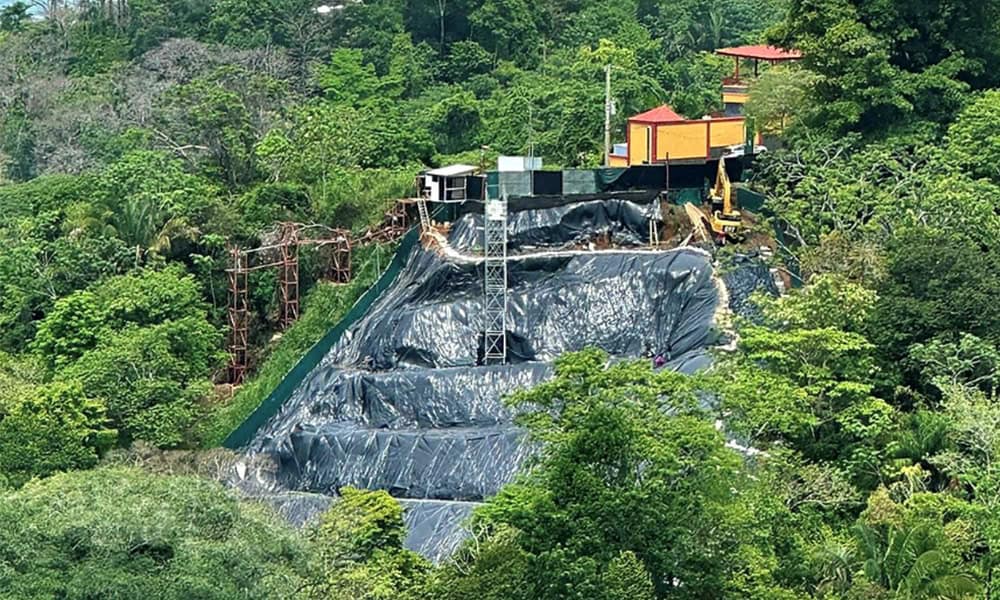The Environmental Prosecutor’s Office paralyzed the construction of a tourism Real Estate project located in Manuel Antonio, Quepos, on the road to Playitas Beach. The project was being built in a forest area within the Aguirre Biological Corridor. The residential project, Islas de Manuel Antonio, was being developed and consisted of an apartment tower, a restaurant, and a beach club. The tower design included 16 floors.
An alleged illegal change of land use is being investigated for “illegal forest exploitation of the forest cover found on the site.” In addition, a precautionary measure was requested from the Criminal Court of Quepos. The measure was accepted for a for a period of four months starting on May 31, according to a press release.
The Public Prosecutor’s Office is investigating the alleged crimes of ideological falsehood, prevarication, change of land use, violation of the Forestry Law, and violation of the Water Law, under file number 18-000027-0611-PE.
According to the Prosecutor’s Office, the existing evidence supports that the site is forest land and that it is part of the Aguirre Biological Corridor, which is of vital importance to the ecosystems of this area, including the Manuel Antonio National Park.
The Prosecutor’s Office suspects that the change in land use materialized through illegal logging of the forest cover found at the site. In March, approximately twenty-five thousand Costa Ricans signed a petition to stop the construction of this real estate project.
According to the National System of Conservation Areas, a biological corridor is a delimited continental, marine-coastal, and insular territory whose primary purpose is to provide connectivity between protected wildlife areas and between landscapes, ecosystems, and habitats, whether natural or modified, rural or urban, to ensure the maintenance of biodiversity and ecological and evolutionary processes.
Currently, Costa Rica has 44 biological corridors, representing about 33% of the continental territory. At the time, the developer stated that it complied with all the necessary permits, that the project was environmentally sustainable, and that it would have a positive impact on the community.






